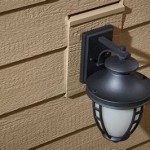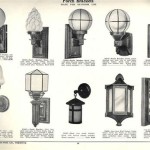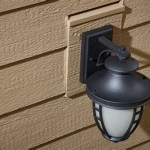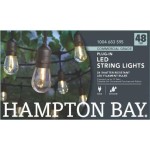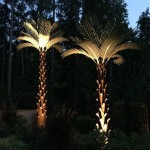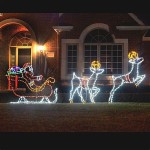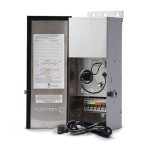How To Mount Outdoor Flood Lights: A Comprehensive Guide
Outdoor flood lights are valuable additions to any property, providing enhanced security, improved visibility, and aesthetic appeal. Properly mounting these lights is crucial for optimal performance and longevity. This article offers a detailed guide on how to mount outdoor flood lights, covering essential aspects from planning and preparation to installation and testing.
Key Point 1: Planning and Preparation
Before beginning the physical installation, careful planning is paramount. This stage encompasses selecting the appropriate flood light, determining the optimal location, and gathering the necessary tools and materials.
Selecting the Right Flood Light: Various types of flood lights are available, each with specific characteristics and applications. Consider factors such as light output (measured in lumens), beam angle, color temperature, and energy efficiency. LED flood lights are generally preferred for their long lifespan and low energy consumption. Furthermore, consider whether you require motion-sensing capabilities or smart home integration. Check the ingress protection (IP) rating to ensure the chosen light is suitable for outdoor use; a rating of IP65 or higher is recommended for resistance to dust and water.
Choosing the Optimal Location: The location of the flood light significantly impacts its effectiveness. Identify areas that require illumination, such as driveways, walkways, patios, or vulnerable points around the property. Consider the direction of the light beam; avoid aiming it directly at neighboring properties or creating glare that could be a nuisance. Ensure the chosen location provides a stable mounting surface and access to a power source. Mounting height also plays a crucial role; higher mounting generally provides wider coverage, but may require more powerful lights.
Gathering Tools and Materials: Having the right tools and materials readily available streamlines the installation process. Essential tools include a drill with appropriate drill bits for the mounting surface, a screwdriver (both Phillips head and flathead), a wire stripper, wire connectors, a voltage tester, a ladder, and safety glasses. Required materials include the flood light fixture, mounting hardware (typically included with the fixture), weatherproof electrical box (if required), conduit (for protecting wiring), and appropriate wiring based on the electrical code in your region.
Safety Precautions: Safety should always be the top priority. Before commencing any electrical work, disconnect the power supply to the circuit at the breaker box. Use a voltage tester to confirm that the circuit is de-energized. Wear safety glasses to protect your eyes from debris. If working at heights, use a sturdy ladder and ensure it is placed on a level surface. If uncertain about any aspect of the electrical work, consult a qualified electrician.
Permits and Regulations: Before beginning any electrical work, research local building codes and regulations. Some jurisdictions require permits for electrical installations, and it is essential to comply with these regulations to avoid potential fines or penalties.
Key Point 2: Mounting the Flood Light Fixture
This involves physically securing the flood light to the chosen location, which typically requires attaching a mounting bracket or directly affixing the fixture to a junction box.
Preparing the Mounting Surface: Ensure the mounting surface is clean and free of debris. If mounting to wood, pre-drill pilot holes to prevent the wood from splitting. If mounting to brick or concrete, use a masonry drill bit and appropriate anchors. Ensure the mounting surface can support the weight of the flood light fixture.
Installing the Mounting Bracket (if applicable): Some flood lights require a separate mounting bracket. Attach the bracket to the mounting surface using the screws or hardware provided. Ensure the bracket is securely fastened and aligned correctly. Use a level to ensure the bracket is perfectly horizontal or vertical, depending on the desired orientation of the flood light.
Connecting to a Junction Box (if applicable): If a junction box is required, ensure it is weatherproof and properly installed. Connect the flood light wiring to the junction box wiring using wire connectors. Follow the color-coding conventions: black to black (hot), white to white (neutral), and green or bare copper to green or bare copper (ground). Securely tighten the wire connectors to ensure a solid electrical connection.
Directly Mounting the Fixture: Some flood lights can be directly mounted to the mounting surface. Position the fixture against the mounting surface and align the mounting holes. Insert the screws or hardware and tighten them securely. Ensure the fixture is stable and does not wobble.
Weatherproofing the Installation: To prevent water damage, seal any gaps or openings around the mounting bracket or fixture with weatherproof sealant. Ensure the electrical connections are protected from moisture. If using conduit, seal the ends of the conduit with weatherproof caulk or fittings.
Adjusting the Aim: Once the fixture is mounted, adjust the aim of the flood light to achieve the desired coverage. Loosen the adjustment screws and pivot the light until it is pointing in the correct direction. Tighten the adjustment screws to secure the light in place. Avoid pointing the light directly at neighboring properties or creating excessive glare.
Key Point 3: Wiring and Electrical Connections
Proper wiring is crucial for the safe and reliable operation of the flood light. This step involves connecting the flood light's wiring to the power supply, ensuring correct polarity, and grounding the fixture.
Confirming Power is Off: Before touching any wires, double-check that the power is turned off at the breaker box. Use a voltage tester to verify that the circuit is de-energized. This is a critical safety precaution.
Identifying Wires: Typically, electrical wiring consists of three wires: a black (hot) wire, a white (neutral) wire, and a green or bare copper (ground) wire. It is essential to identify each wire correctly to ensure proper connections.
Connecting the Wires: Using wire strippers, carefully strip a short length of insulation from the ends of the wires. Connect the black wire from the flood light to the black wire from the power supply using a wire connector. Connect the white wire from the flood light to the white wire from the power supply using a wire connector. Connect the green or bare copper wire from the flood light to the green or bare copper wire from the power supply using a wire connector. Ensure the wire connectors are securely tightened to prevent loose connections.
Grounding the Fixture: Grounding is essential for safety. The ground wire provides a path for electricity to flow to the ground in the event of a fault, which helps prevent electrical shock. Ensure the ground wire is properly connected to the grounding terminal in the junction box or on the flood light fixture.
Weatherproof Connections: Protect all electrical connections from moisture by using weatherproof wire connectors or wrapping them with electrical tape. Ensure the junction box is properly sealed to prevent water from entering.
Testing the Connection: After completing the wiring, carefully turn the power back on at the breaker box. Test the flood light to ensure it is working correctly. If the light does not turn on, double-check the wiring connections and ensure the bulb is properly installed.
Securing the Wiring: Neatly tuck the wiring into the junction box or behind the mounting bracket. Ensure the wires are not pinched or strained. Use wire ties or clips to secure the wiring and prevent it from coming loose.
Adjusting the Light (Again): Once the electrical connections are verified, perform a final adjustment of the flood light's aim to optimize the lighting coverage. Observe the illuminated area from various angles to ensure the light is providing the desired effect.
Motion Sensor Adjustment (If Applicable): If the flood light has a motion sensor, adjust the sensitivity and range settings to suit your needs. Test the motion sensor to ensure it is detecting movement correctly and activating the light appropriately. Refer to manufacturer's instructions for motion sensor adjustment since this can vary from model to model.

Probrite 24 Outdoor Security Lighting Area Light And Flood Mount Arm Arm24 Slv The Home Depot

Lutec 2 Light White Outdoor Integrated Led Wall Or Eave Mount Flood P6221w The Home Depot

Konlite Led Outdoor Flood Light 3 600 Lumens 27w 5000k 120 277v Revolve

Extruded Arm Flood Lights Square Parking Lot Poles

70 Watt Led Outdoor Flood Light 8900 Lumens Revolveled Com Revolve

Lutec 2 Light White Outdoor Integrated Led Wall Or Eave Mount Flood P6221w The Home Depot

80w Led Flood Light Extruded Arm Post Wall Mount

Led Flood Light 30w 5000k With Knuckle Mount 3999 Lumens Ledradiant

Honeywell Outdoor Led Flood Light With Knuckle Mount 5000 Lumens 55 Watts Com

Broe Outdoor Integrated Led Wall Mount Flood Light With Dusk To Dawn Photocell Lights Lithonia
Related Posts
